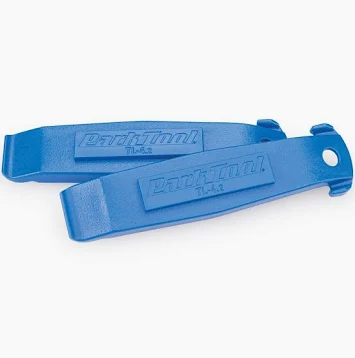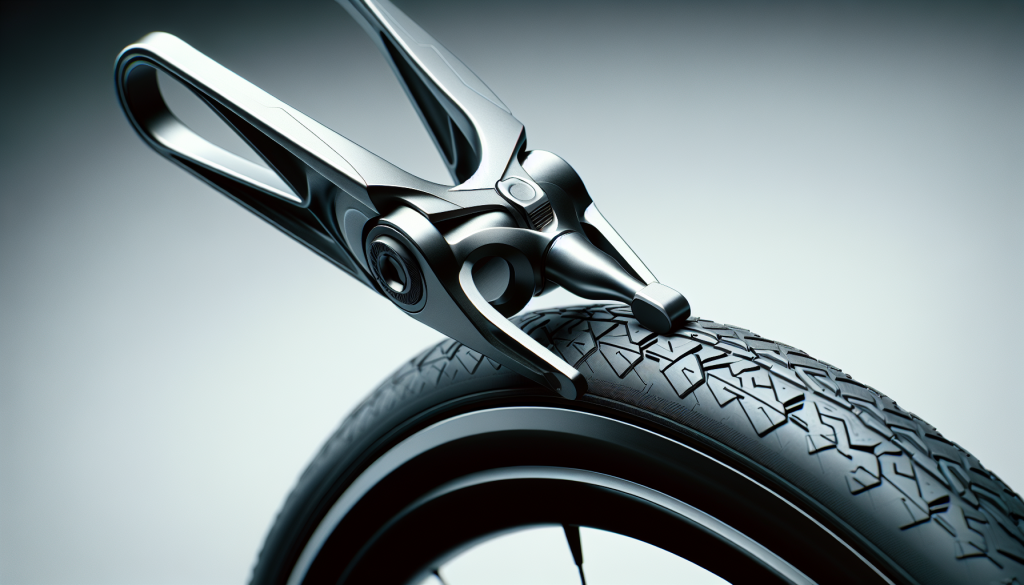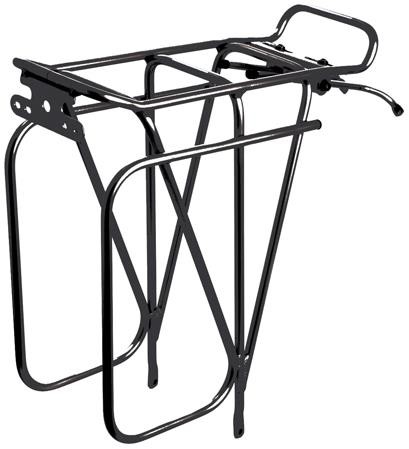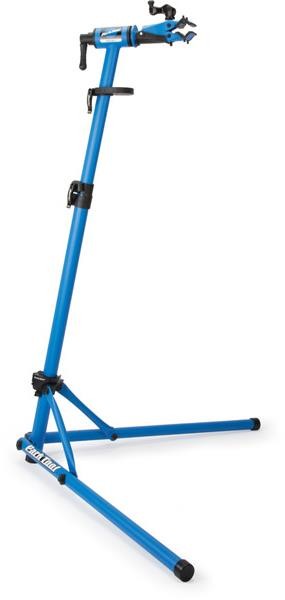Are you tired of struggling to change a flat tire on your bike? Look no further, because in this article, you will learn a foolproof method on how to use tyre levers effectively. By following these simple steps, you’ll be able to effortlessly remove and replace your bike’s tire, giving you more time to enjoy the open road. So, grab your tyre levers and let’s get started!
Table of Contents
Toggle1. Choosing the Right Tyre Levers
Quality and Durability
When it comes to choosing the right tyre levers, quality and durability should be your top considerations. Look for levers that are made from strong materials such as hardened steel or reinforced plastic. These materials will ensure that your levers can withstand the pressure and force required to remove stubborn tyres without breaking or bending. Investing in high-quality tyre levers will not only make your tyre changing process easier but also save you from the hassle of constantly replacing cheap and flimsy levers.
Design and Size
The design and size of the tyre levers also play a significant role in their effectiveness. Opt for levers that have a slim and tapered design as they can easily slide between the tyre and rim, allowing you to pry off the tyre more efficiently. Additionally, consider the size of the levers. Longer levers provide increased leverage, making it easier to remove stubborn tyres. However, keep in mind that longer levers may also require more effort to handle. It is essential to find a balance between length and comfort that suits your strength and dexterity.
Compatibility with Tire Type
Another crucial factor in choosing the right tyre levers is ensuring compatibility with the type of tire you are working with. Different tyres have varying levels of difficulty when it comes to removal, especially tubeless and clincher tires. Tubeless tires, for example, can be more challenging to remove due to their airtight seals. Look for tyre levers specifically designed for the type of tire you have to ensure a smooth and efficient removal process.
Ergonomics and Grip
Lastly, consider the ergonomics and grip of the tyre levers. Look for levers with comfortable handles that provide a good grip. Ergonomic handles will minimize hand fatigue, allowing you to work on your tires for longer periods without discomfort. Some levers even come with textured or rubberized grips that provide an extra layer of security and prevent slippage during use. Prioritizing ergonomics and grip will make the entire tyre lever process much more enjoyable and efficient.
2. Preparing for Tyre Lever Use
Gather Necessary Tools
Before you start using your tyre levers, it is essential to gather all the necessary tools you will need. Apart from the tyre levers themselves, you will need a valve core remover, a pump or compressor to deflate the tire, and a bucket of soapy water or a tire lubricant for easier removal. Having all these tools at hand will save you time and frustration during the process.
Select a Suitable Work Area
Next, choose a suitable work area where you can safely and comfortably work on your tires. Find a flat and well-lit area, preferably with a solid surface such as a concrete floor or a sturdy workbench. Avoid working on uneven or slippery surfaces as they can pose a safety hazard. Also, ensure that there is enough space around you to move freely and place your tools without the risk of knocking them over.
Deflate the Tire
Before you can begin using the tyre levers, you need to deflate the tire fully. This step is crucial to provide some slack in the tire, making it easier to pry off from the rim. To do this, remove the valve cap and use a valve core remover to extract the valve core. This will allow the air to escape. Once the tire is completely deflated, you are ready to proceed with the tyre lever technique.
Ensure Safety Measures
When working with tyre levers, it is essential to prioritize safety. Ensure that you are wearing protective gloves and eyewear to protect your hands and eyes from any potential injury. Beware of sharp edges on the rim or any other components of the tire assembly. Always handle the levers with care and avoid applying excessive force that could cause injury or damage to the tire or rim. Taking these safety precautions will help prevent accidents and ensure a smooth and safe tyre lever experience.
3. Basic Steps of Tyre Lever Technique
Now that you have prepared for the tyre lever use let’s go through the basic steps of this technique:
Position the Wheel
Start by positioning the wheel in a way that allows you to access both sides of the tire easily. This can be done by placing the wheel on a flat surface and ensuring that the valve stem is facing upward. Positioning the wheel properly will make it easier to insert the levers and remove the tire.
Insert the First Lever
Take one of the tyre levers and slide it between the tire and the rim, starting from the side opposite the valve stem. Push the lever in until it hooks onto the rim. This will create a gap between the tire bead and the rim, providing enough space to insert the second lever.
Levering Off the First Side
Once the first lever is securely in place, use it as a fulcrum and pry the tire bead up and over the rim. Apply steady and even pressure, leveraging the lever against the rim. As you do this, work your way around the entire circumference of the wheel, gradually moving the lever and freeing the tire bead from the rim. Take your time and be patient, ensuring that the tire bead is completely free from the rim before moving on to the next step.
Inserting the Second Lever
With the first side of the tire successfully levered off, it’s time to insert the second lever. Choose a point on the other side of the tire, opposite the first lever. Slide the second lever in between the tire and the rim, ensuring that it hooks securely onto the rim. This will create another gap for the removal of the second side of the tire.
Levering Off the Second Side
Using the second lever as a fulcrum, repeat the levering motion to lift the tire bead up and over the rim on the second side. Apply consistent and controlled force while moving around the wheel, freeing the tire bead from the rim entirely.
Removing the Tire
Once both sides of the tire have been levered off, you can now remove the tire from the rim. Grab the tire with your hands and pull it toward you, away from the rim. Use your fingers to push the tire bead over and away from the rim, ensuring that it does not get caught or snagged during the removal process.
Mounting the Tire
After successfully removing the old tire, you can now proceed to mount the new tire onto the rim. This is generally done by pressing the tire bead onto the rim, starting at the valve stem. Use your hands or a suitable tool to guide the tire bead over the rim and ensure that it is evenly seated.
4. Tips for Easier Tyre Lever Use
While the basic steps of tyre lever technique are relatively straightforward, here are some additional tips to make your experience even easier and more efficient:
Apply Lubricant
Before attempting to remove the tire with your levers, consider applying a lubricant such as soapy water or a tire-specific lubricant to the bead of the tire. This will reduce friction and make it easier to pry the tire off the rim. Be sure to apply the lubricant evenly around the circumference of the tire for optimal results.
Warm Up the Tire
If you are struggling to remove a particularly stubborn tire, you can try warming up the tire before using your levers. Heating the tire slightly can make the rubber more pliable, making it easier to work with. One way to warm up the tire is by running it under warm water or using a heat gun (taking care not to overheat it). Remember not to use excessive heat, as it can damage the tire.
Utilize Leverage
One of the essential principles of tyre lever use is utilizing leverage effectively. When inserting your levers, position them in a way that maximizes leverage. This means inserting the levers as far as possible between the tire and the rim, creating the most significant gap and mechanical advantage. Making use of proper leverage will make the prying motion more effortless and reduce the effort required on your part.
Take Breaks if Necessary
Tyre lever use can be physically demanding, especially if you are dealing with stubborn or tight-fitting tires. Do not hesitate to take breaks if you feel fatigued or need to rest your hands. Overexertion can not only lead to inefficiency but also increase the risk of injury. Remember to listen to your body and give yourself sufficient rest during the process.
Maintain a Steady Pace
While it is important to take breaks when needed, it is equally important to maintain a steady pace when using tyre levers. Working consistently and rhythmically will help you maintain focus and efficiency throughout the process. Do not rush, but also avoid unnecessary delays. Find a comfortable pace that allows you to work steadily without compromising the quality of your tire removal or installation.
5. Troubleshooting Common Issues
Despite careful preparation and execution, some common issues may still arise during tyre lever use. Here are some troubleshooting tips to address these problems:
Stuck Bead
If you encounter a bead that seems impossible to break loose, consider using additional tools such as bead jacks or clamps to assist in separating the tire from the rim. These tools provide extra leverage to overcome stubborn beads. You can also try gently tapping the tire sidewall or using a rubber mallet to loosen the bead.
Pinching the Tube
While levering off the tire, it is essential to prevent pinching or damaging the inner tube. Make sure the tube is deflated completely, and use your fingers to guide it away from the lever’s edge. Taking your time and being cautious while levering can minimize the risk of pinching the tube.
Damage to the Rim
Be mindful of the rims during the tyre lever process. Using excessive force or prying at an improper angle can cause damage to the rim, such as scratches or dents. Take your time and apply steady pressure to avoid harming the rim. If you notice any damage, assess its severity and decide whether the rim needs repair or replacement.
Bent or Broken Lever
In some cases, the tyre lever itself may become bent or broken during use, especially if you are dealing with particularly stubborn tires. If this happens, stop using the damaged lever immediately and replace it with a new one. Using a compromised lever can not only make the process more challenging but also pose a safety risk.
6. Advanced Tyre Lever Techniques
Once you have mastered the basic tyre lever technique, you can explore some advanced techniques to handle specific situations or tire types more effectively. Here are a few examples:
Tubeless Tire Removal
Tubeless tires require a slightly different approach due to their airtight seals. When removing a tubeless tire, it is crucial to break the seal first before levering off the bead. Insert a tyre lever near the valve stem and pry the bead away from the rim, breaking the seal. Once the seal is broken, you can proceed with the regular levering technique to remove the tire.
Using Three Levers
In some cases, using three levers instead of two can provide additional leverage and make the tyre levers’ job easier. Insert the first two levers as usual, creating gaps on both sides of the tire. Then, insert the third lever between the two existing levers, stepping on it to hold it in place. This will create a larger gap, making it easier to lever off the tire.
Assisting Tools and Accessories
In addition to tyre levers, there are other assisting tools and accessories available that can enhance the tyre lever process. These include bead jacks, adjustable wrenches, or even using cable ties to hold the bead in place while levering. These tools and accessories can be particularly helpful when dealing with challenging tire and rim combinations.
7. Safety Precautions
When using tyre levers, it is crucial to prioritize safety. Keep the following precautions in mind to ensure a safe and accident-free experience:
Wear Protective Gloves and Eyewear
Always wear protective gloves and eyewear to shield your hands and eyes from potential injuries. The force required to remove or mount tires, as well as the possibility of sharp edges, can pose risks. Protecting your hands and eyes will help prevent cuts, punctures, or other accidents.
Beware of Sharp Edges
Be cautious of sharp edges on the rim or other parts of the tire assembly. Prior to levering off the tire, inspect the rim for any sharp or jagged areas and handle it with care. Wearing gloves will provide an additional layer of protection against accidental cuts or scrapes.
Mind the Tire Pressure
Ensure that the tire is fully deflated before attempting to remove it with the levers. Failing to do so can result in unnecessary force exertion and increase the risk of accidents. Additionally, when inflating the tire after mounting, be mindful of the recommended pressure to prevent overinflation, which can cause blowouts or damage to the tire.
Avoid Excessive Force
While tyre levers require a certain amount of force to remove and mount tires, it is essential to avoid applying excessive force. Applying too much force can not only lead to accidents but also damage the tire, rim, or the lever itself. Use controlled and consistent pressure, ensuring that the lever is properly positioned to prevent slippage or sudden release.
8. Cleaning and Maintaining Tyre Levers
To ensure the longevity and effectiveness of your tyre levers, it is important to clean and maintain them regularly. Here are some tips to keep your levers in optimal condition:
Remove Excess Dirt and Debris
After each use, clean your tyre levers by removing any excess dirt and debris. Wipe them down with a clean cloth or use mild soap and water to remove any stubborn grime. Ensure that the levers are completely dry before storing them to prevent corrosion.
Inspect for Wear or Damage
Regularly inspect your tyre levers for any signs of wear or damage. Check for any bending, cracking, or loss of effectiveness. If you notice any issues, replace the worn or damaged lever immediately, as compromised levers can pose safety risks and make the tyre lever process more difficult.
Store Properly
When not in use, store your tyre levers in a safe and dry place. Avoid leaving them exposed to excessive heat or extreme cold, as this can cause deformation or damage to the levers. If possible, store them in a dedicated tool organizer or a toolbox to protect them from accidental damage.
Regularly Lubricate
To maintain smooth operation and prevent rust or corrosion, regularly lubricate your tyre levers. Apply a thin layer of lubricant to the working edges and pivot points of the levers. This will reduce friction during use, making the levering process easier and more efficient.
9. Alternative Methods of Tyre Removal
While tyre levers are the most common tool for removing tires, there are alternative methods available if you prefer not to use them or encounter difficulties. Here are a couple of options:
Using a Tire Machine
If you have access to a tire machine, it can significantly simplify the tire removal and mounting process. Tire machines are designed specifically for this purpose, utilizing mechanical power to make the process faster and more effortless. However, keep in mind that tire machines can be expensive and may not be feasible for everyone.
Seeking Professional Help
For those who are uncomfortable or unfamiliar with tyre lever use, seeking professional help is always an option. Tire shops and mechanics have the necessary tools, expertise, and experience to remove and mount tires efficiently and safely. While this may incur additional costs, it ensures that the job is done correctly, giving you peace of mind.
10. Conclusion
Using tyre levers is an essential skill for any cyclist or motorist who needs to change or repair tires. By choosing the right levers, preparing adequately, and following the basic steps of the tyre lever technique, you can safely and efficiently remove and mount tires on your own. Remember to take necessary safety precautions, consider advanced techniques for specific tire types, and always maintain and store your tyre levers properly. With practice, you can become a master at using tyre levers, making your tire maintenance tasks much more manageable and enjoyable.








